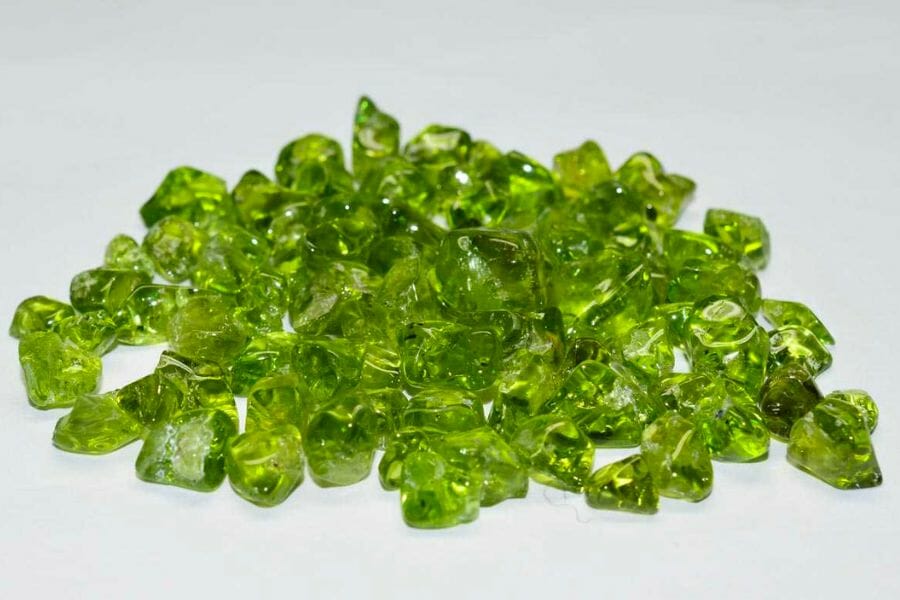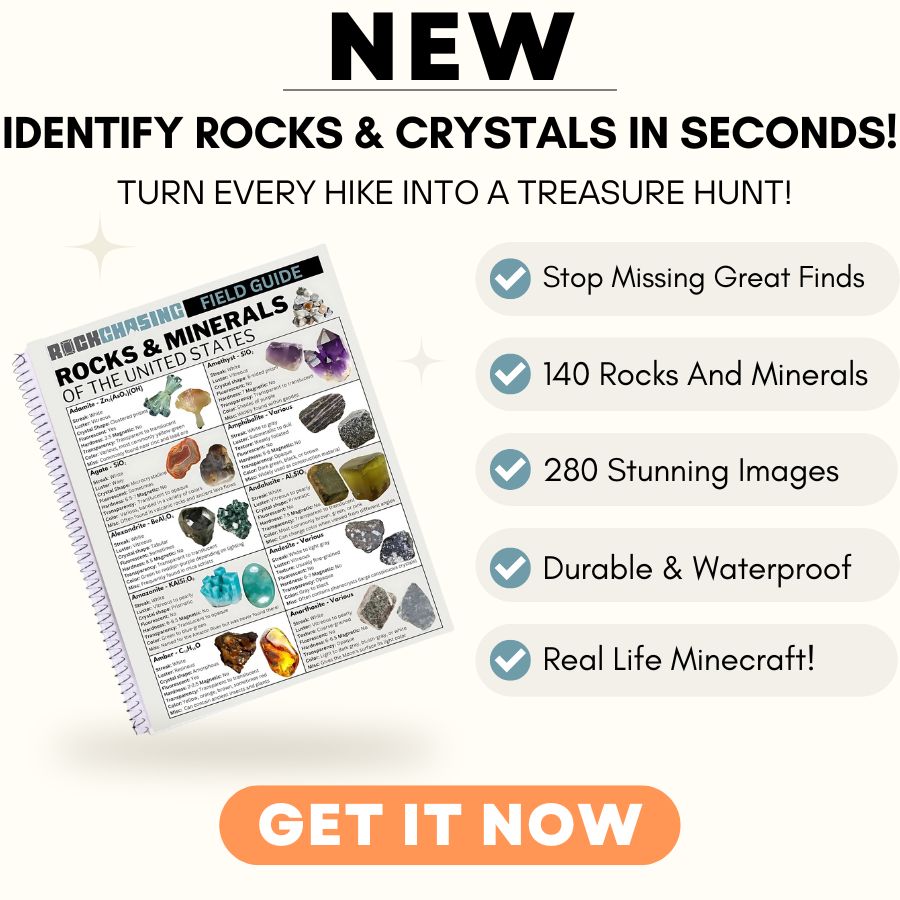Finding crystals can be a rewarding adventure, offering a unique way to explore the natural beauty and geology of the region. Whether you’re a seasoned rockhound or just getting started, knowing where to look is key to uncovering these hidden treasures.
In this state, a variety of locations provide opportunities to discover different types of crystals. From rocky outcrops in the mountains to stream beds that carry sparkling surprises, each area offers its own unique finds for those willing to search.
We can help you get started with some places you can explore for crystals below!
Crystals you can find in the US
The United States offers a wide range of crystals that reflect its diverse geology. From vibrant gems to more subtle mineral formations, there’s something to discover in nearly every region.
Calcite
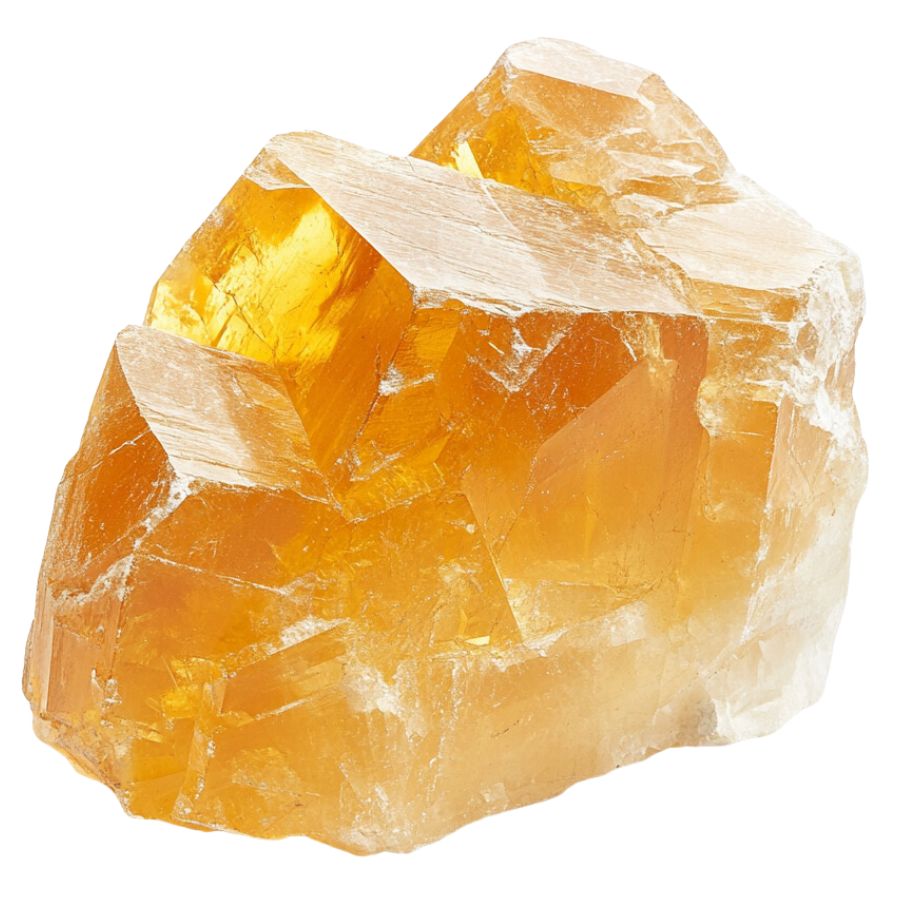
With a variety of forms and a unique property of double refraction, calcite allows objects viewed through the crystal to appear doubled. This mineral can appear in a spectrum of colors, with pure forms typically being transparent or white.
In addition, calcite reacts vigorously with acids, which aids in distinguishing it from other minerals. It also frequently contributes to the structure of sedimentary rocks such as limestone.
Gypsum
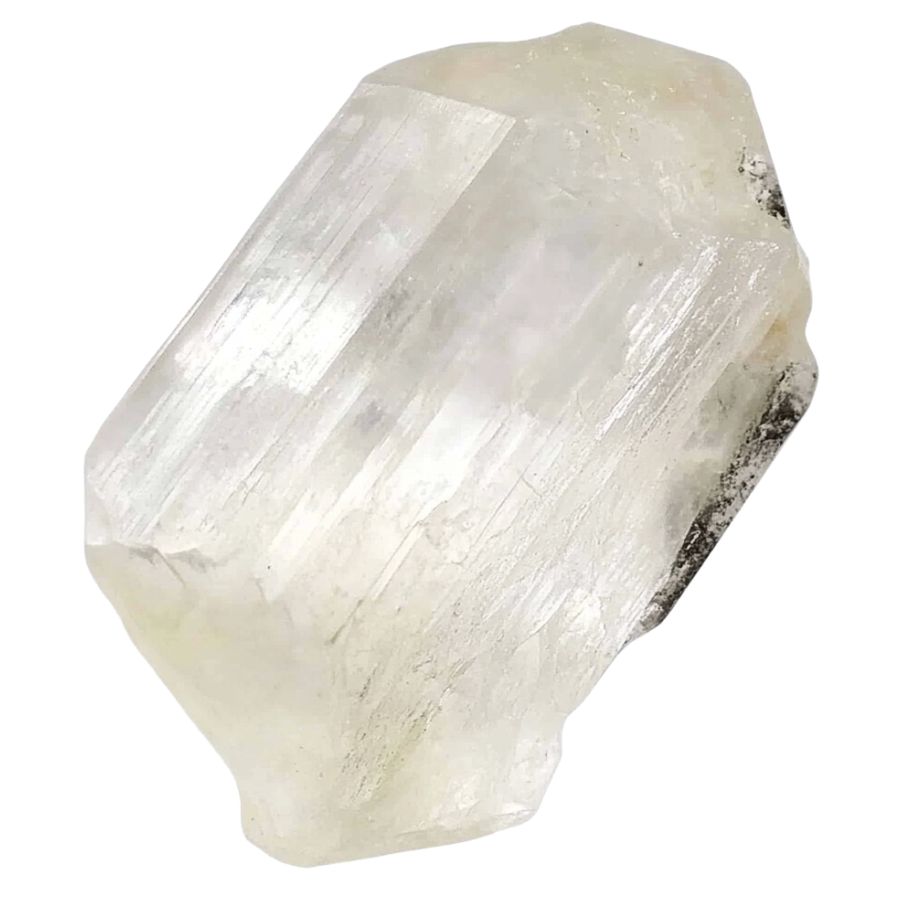
Gypsum’s notable softness allows it to be easily scratched with just a fingernail, often presenting as white or very light-colored in its pure form.
It manifests in both crystalline forms, like selenite, and massive forms such as alabaster, making it versatile in use and appearance.
Gypsum is also essential in the construction industry and is a key component in the manufacture of plaster and drywall.
Fluorite
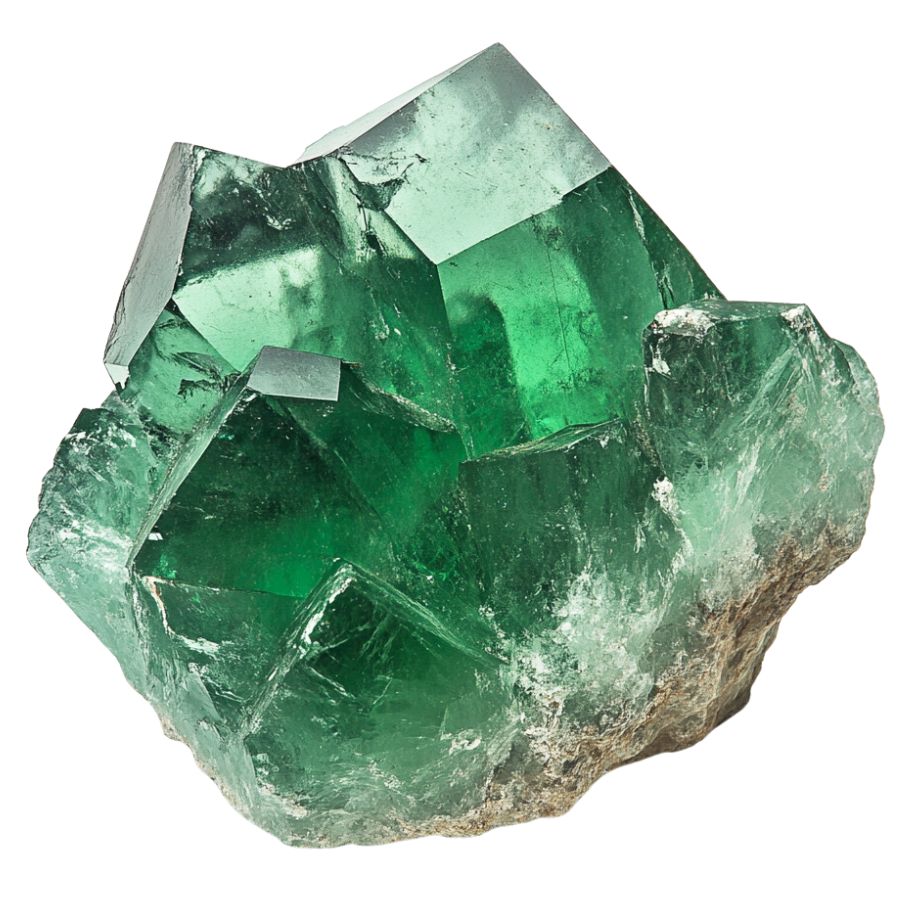
Fluorite comes in a wide range of vibrant colors, including purples, greens, blues, and yellows, and is known for forming in well-defined cubic crystals.
Beyond this, fluorite exhibits fluorescence under ultraviolet light! It can also be used in various industrial applications, including as a flux in steelmaking.
Galena
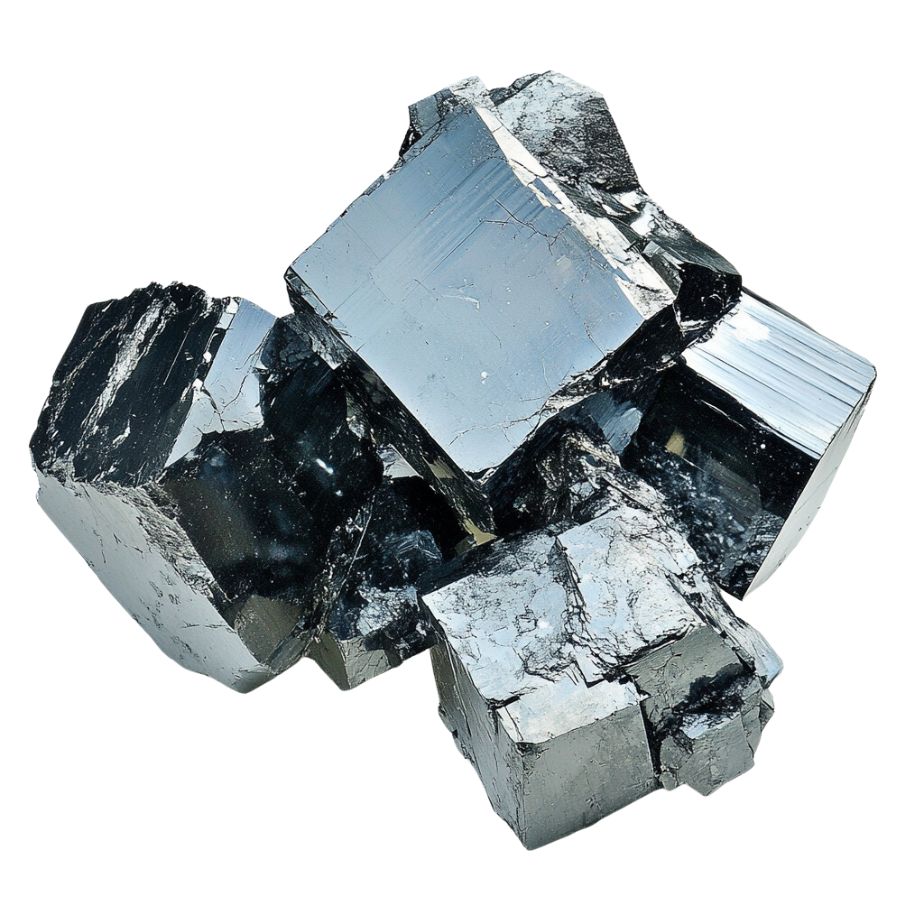
Galena distinguishes itself with a metallic luster and high density, typically found in a cube-like form. It serves as the primary ore of lead, making it important in the metal industry, while its shiny, silver color attracts collectors.
Not only does its appearance make it a subject of interest, but its weight and texture provide tangible lessons in mineral density and metallic properties. Galena also often contains traces of silver, adding to its commercial and educational value.
Corundum
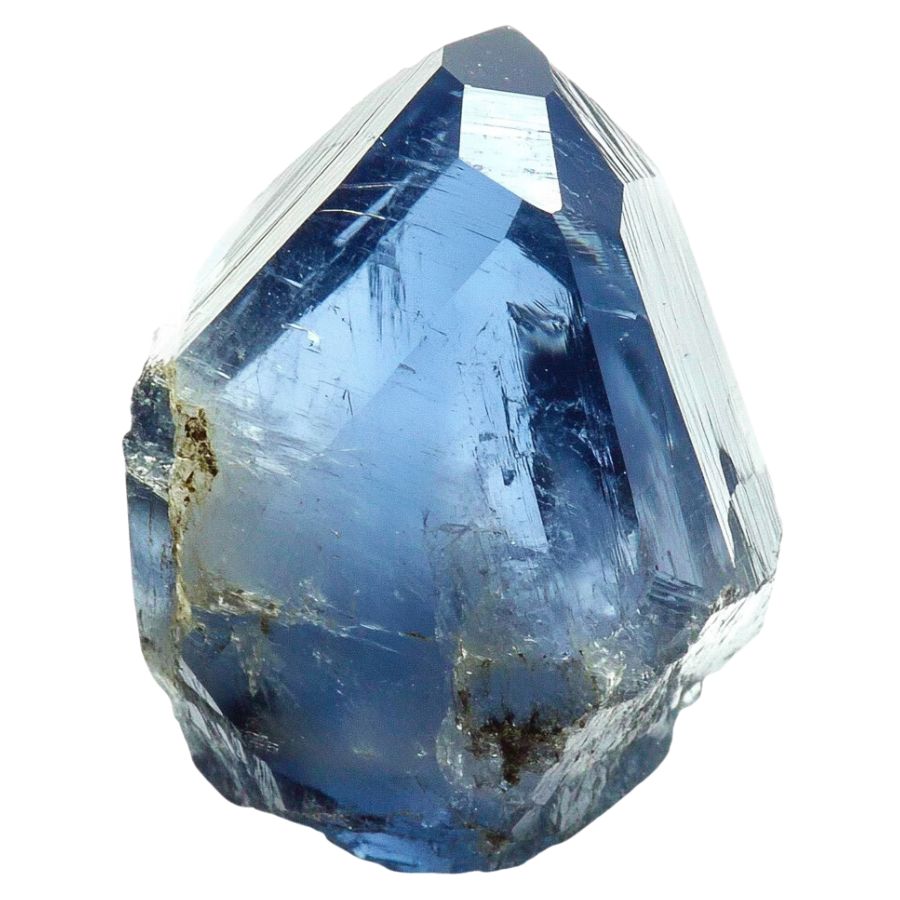
Corundum is a mineral that comes in a variety of colors, though it is typically transparent or gray. Its most famous forms are sapphires and rubies, which are prized for their vibrant blue and red hues.
The mineral is known for its remarkable hardness, ranking just below diamond on the Mohs scale. This durability makes corundum ideal for industrial abrasives and cutting tools, as well as a popular choice for fine jewelry.
Quartz
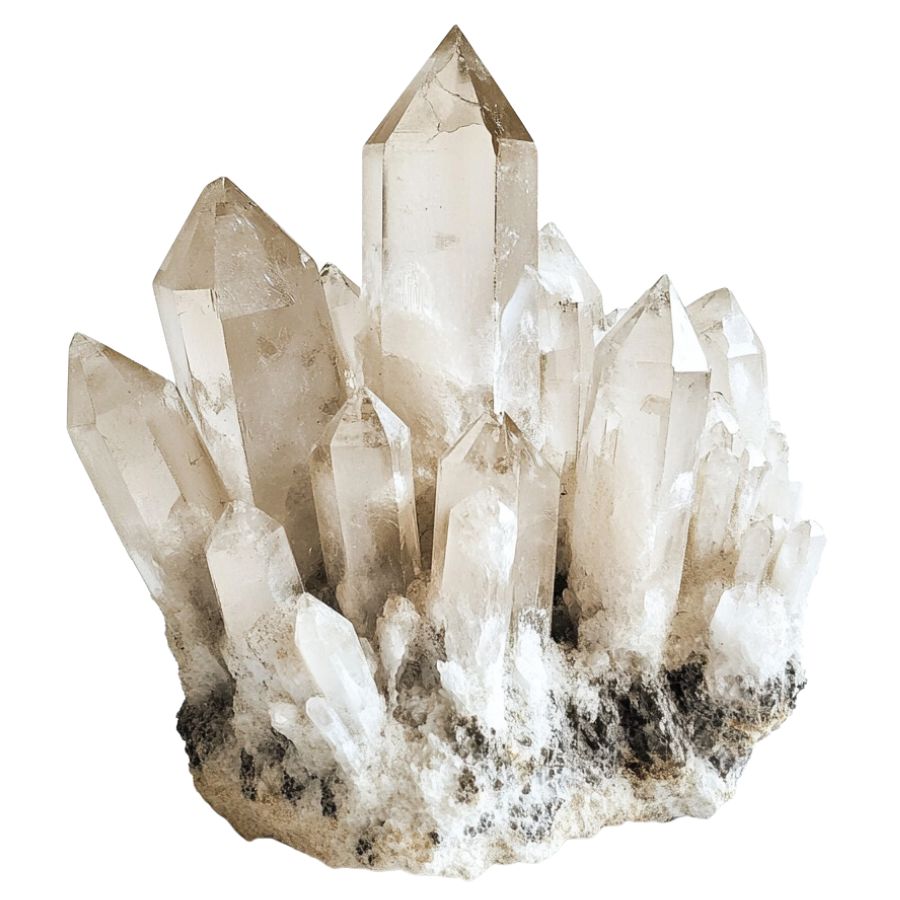
Quartz is among the most common minerals in the Earth’s crust and is prized for its durability and variety. It forms in a wide range of colors and types, from clear rock crystal to purple amethyst.
The mineral is notable for its hardness and durability, which contribute to its use in a variety of applications. Quartz is also popular in the manufacturing of electronics and watches due to its piezoelectric properties, which allow it to convert mechanical pressure into electrical energy.
Pyrite
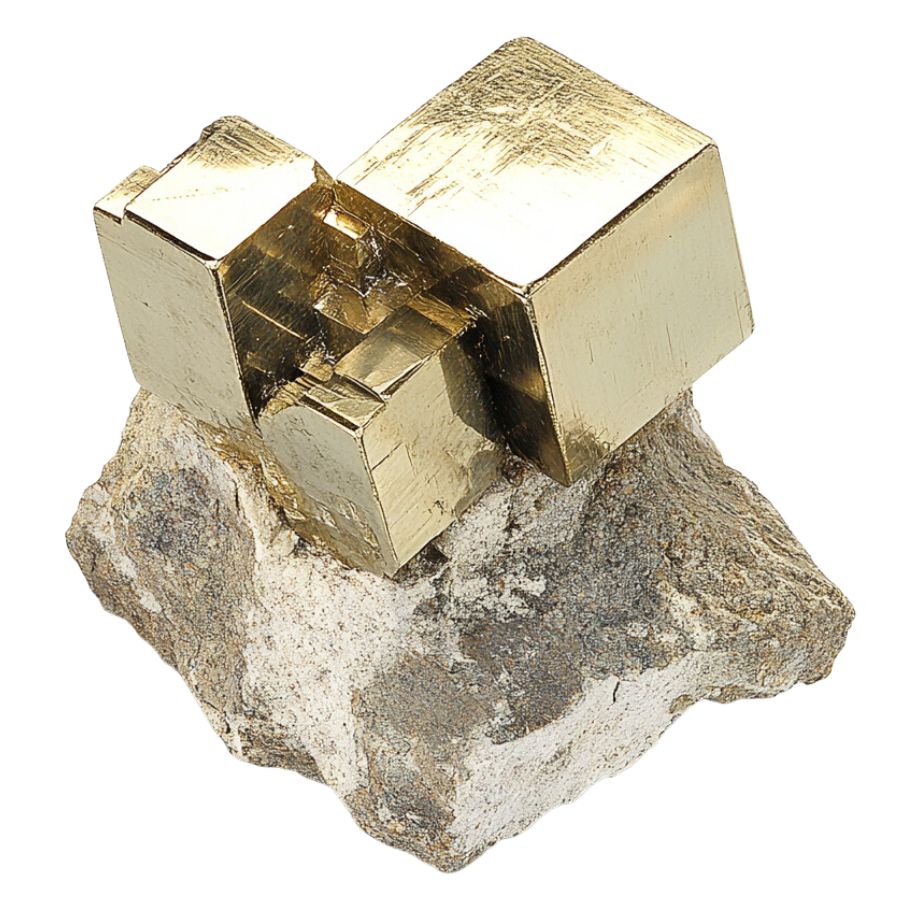
Often mistaken for gold due to its metallic luster and pale brass-yellow hue, pyrite is known colloquially as “fool’s gold.” Its characteristic cube-shaped crystal formations look man-made but are actually completely naturally formed!
Pyrite also has historical importance in producing sulfur dioxide for sulfuric acid production.
Rhodochrosite
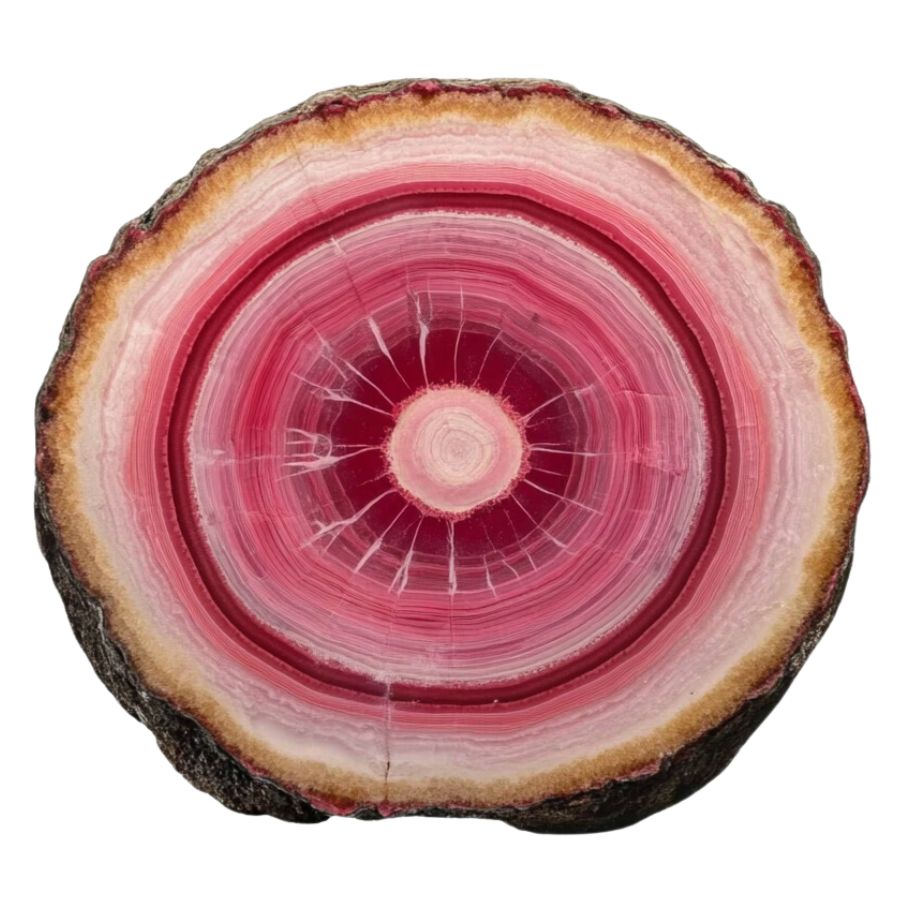
Rhodochrosite stands out with its rich pink and red hues, making it highly desirable as both a mineral specimen and a gemstone.
It typically forms in layered or stalactitic structures, with bands of colors that showcase how it grew over millions of years.
Beyond its beauty, rhodochrosite is significant as the main source of manganese, an essential element used in metal alloys.
Rhodonite
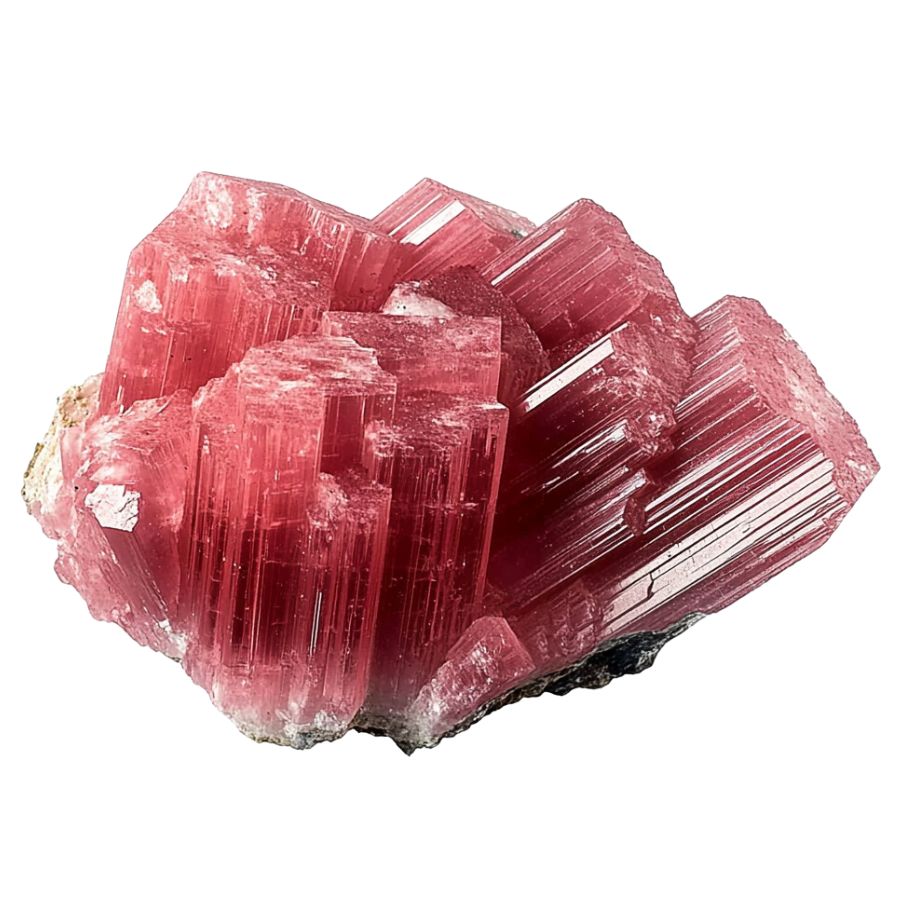
Appreciated for its deep pinks and reds, often complemented by black manganese oxide veins, rhodonite presents a dramatic appearance. It is typically found in metamorphic rocks and is used both as an ornamental stone and in jewelry.
In geology, rhodonite is significant for its role in metamorphic processes and its association with other manganese-rich minerals. It can be found in metamorphosed sedimentary rocks and is sometimes used as an indicator of the presence of manganese deposits.
Vivianite
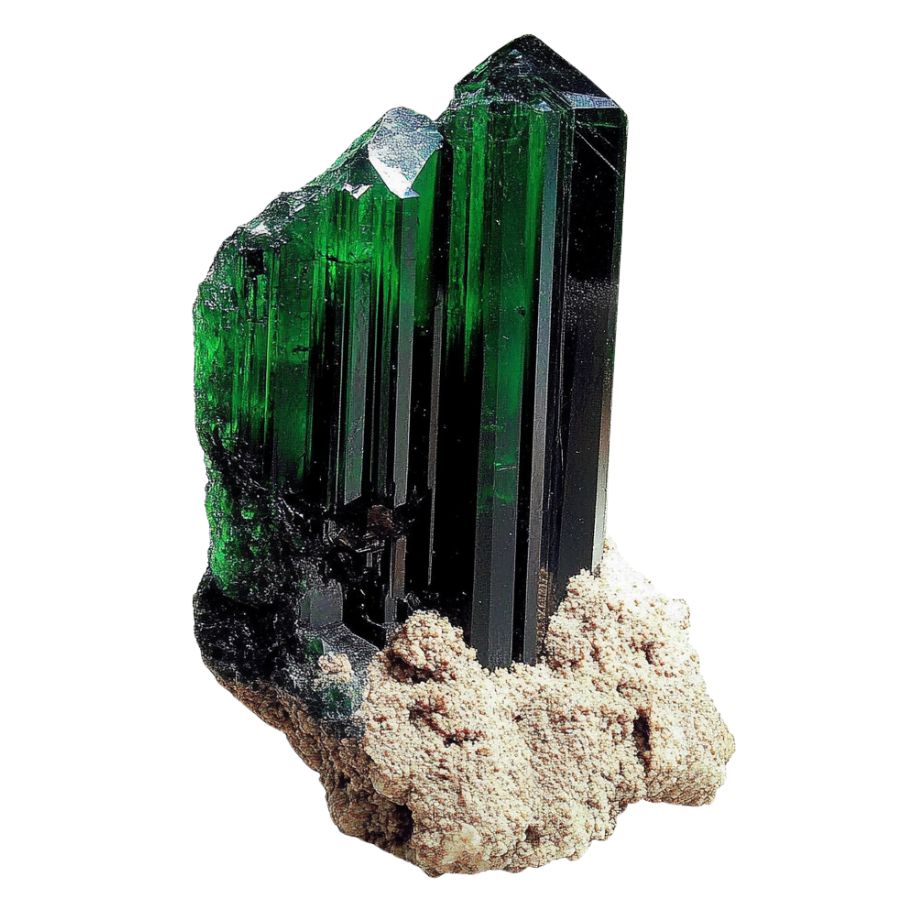
Vivianite, an iron phosphate mineral, emerges in low-oxygen environments like peat bogs or iron-rich deposits. Its striking blue to green color, which can change to a lighter shade over time due to oxidation, makes it a distinctive mineral.
Found in various geological settings, vivianite provides clues about the local conditions and the presence of phosphate deposits.
The Types of Hawaii Crystals You Can Find
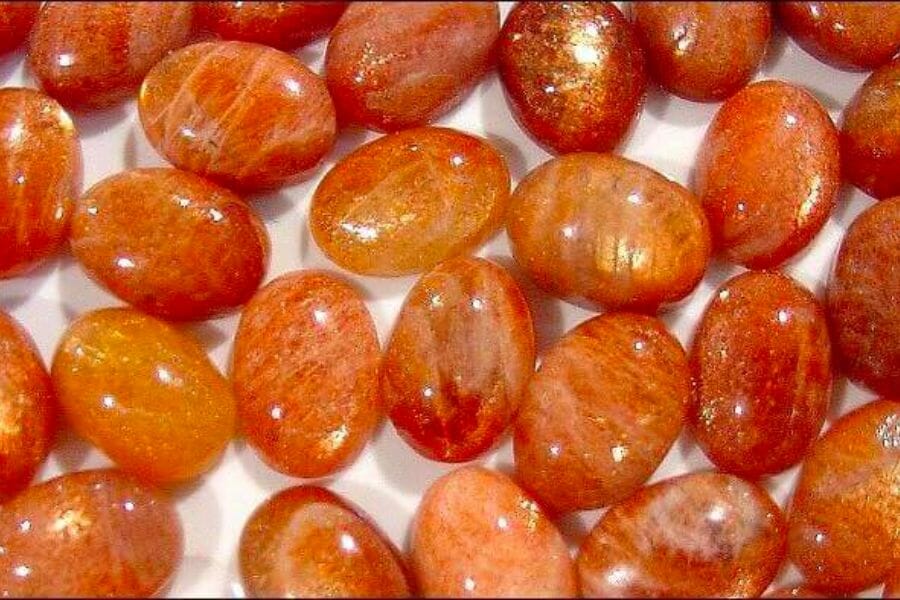
Hawaii is known for its stunning natural beauty, and the crystals found in the state are no exception. Despite its limited crystal resources, there are still a variety of beautiful crystals that can be found. Here are some of them:
Rare crystals found in Hawaii
- Labradorite
- Peridot
- Sunstone
More common crystals found here
- Agate (Banded)
- Jasper
- Obsidian
- Quartz
What rough crystals look like
When you’re out looking for crystals on your own it’s important to know what you’re looking for. This is what you need to look out for:
Look for exteriors like this
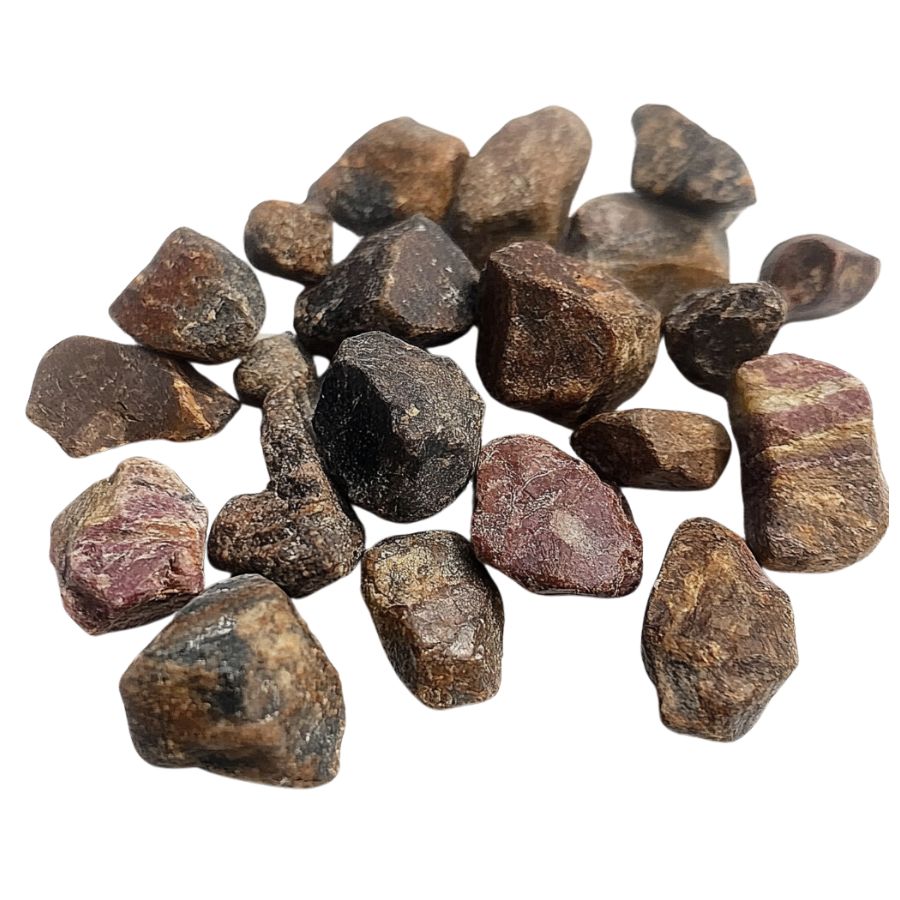
When you’re out searching for crystals in the wild, it’s essential to keep in mind that what you find won’t look like the polished stones you see in stores. One important tip is to consider what certain crystals look like in their raw, natural form.
Without the shine and smooth finish, crystals might appear rough, with jagged edges or earthy tones masking their true beauty. Understanding this can help you spot potential finds that might otherwise be overlooked.
Examine the crystal structure and shape
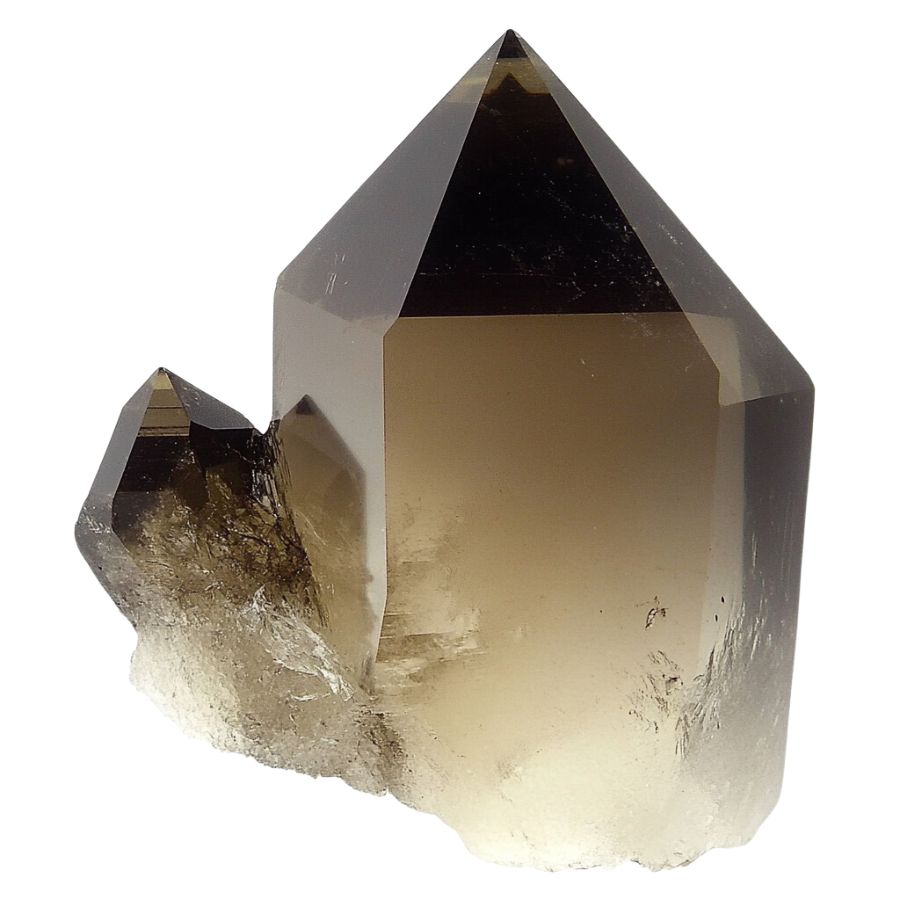
Crystals often form in specific geometric patterns that can be key to identifying them. For example, quartz is known for its hexagonal prisms, while halite typically forms cubic shapes.
By recognizing these distinct patterns, you can differentiate between various types of crystals and better understand what you’ve found.
Observe color
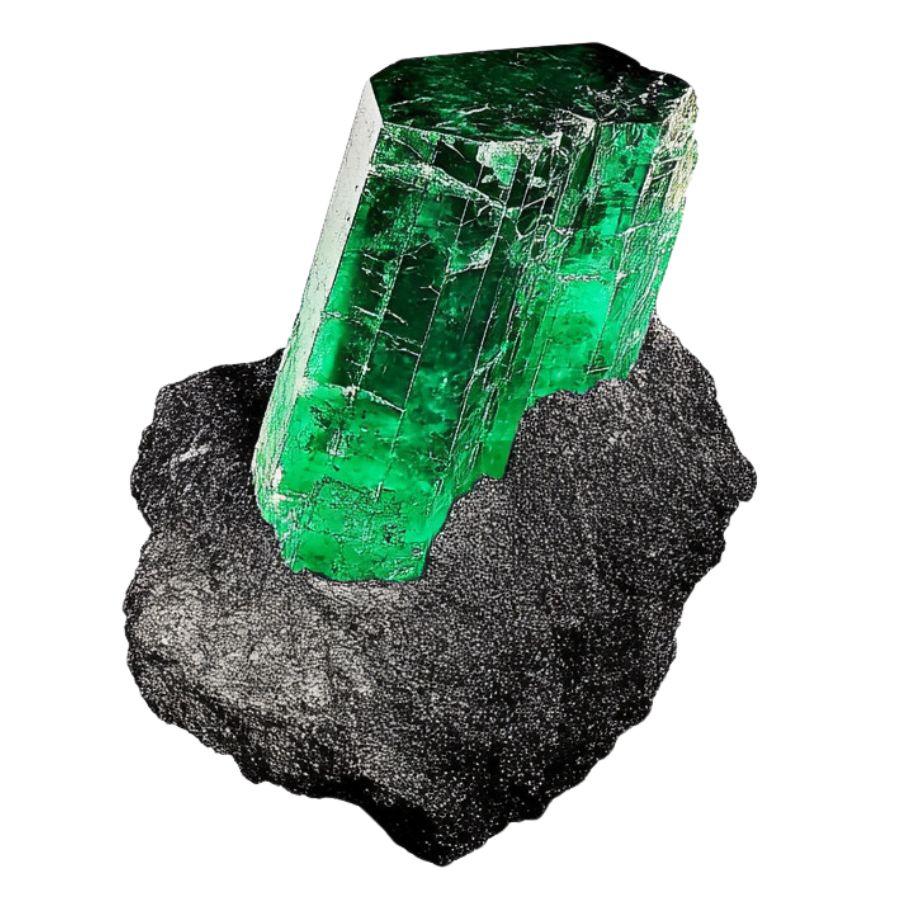
Some crystals are known for their distinct hues, like the deep purple of amethyst or the vibrant green of emerald. However, not all crystals will have strong colors; some may be clear or only slightly tinted.
Check the luster
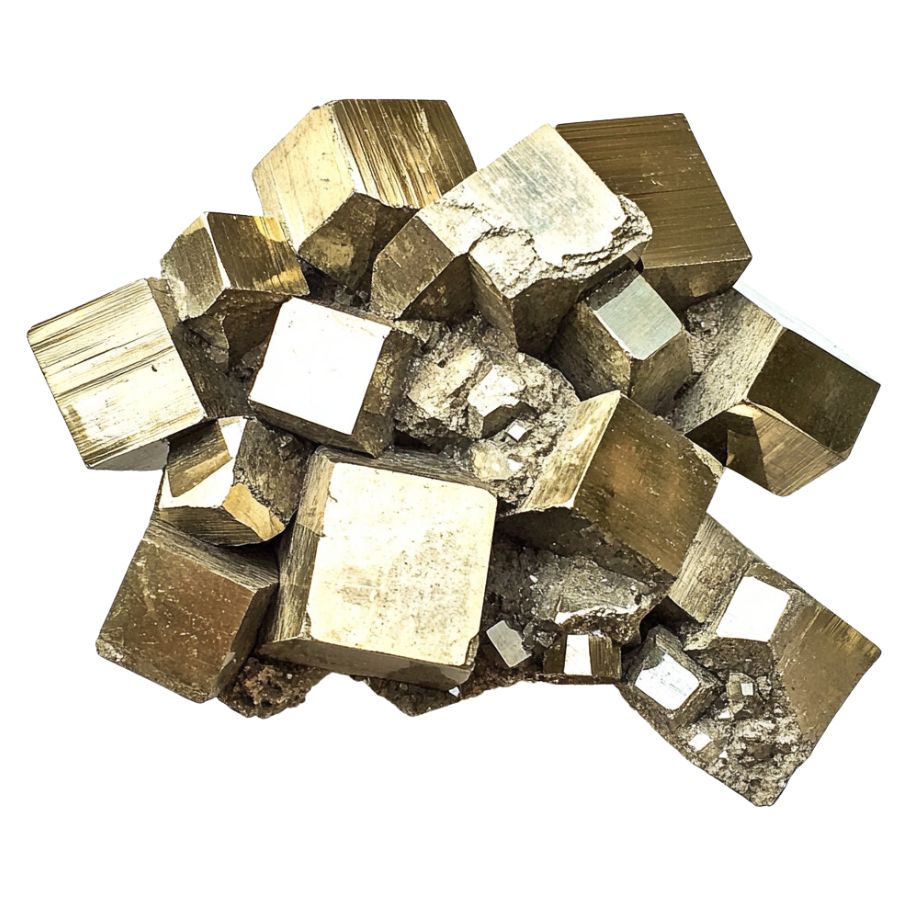
Luster refers to how a crystal’s surface interacts with light. Some crystals might have a shiny, glassy luster, while others may appear metallic or dull. This characteristic can help you determine the type of crystal you’ve found.
However, it’s important to remember that luster isn’t always obvious right away. In some cases, a crystal’s true luster will only become apparent after it’s been cleaned or polished, so keep this in mind as you examine your finds.
Evaluate the transparency
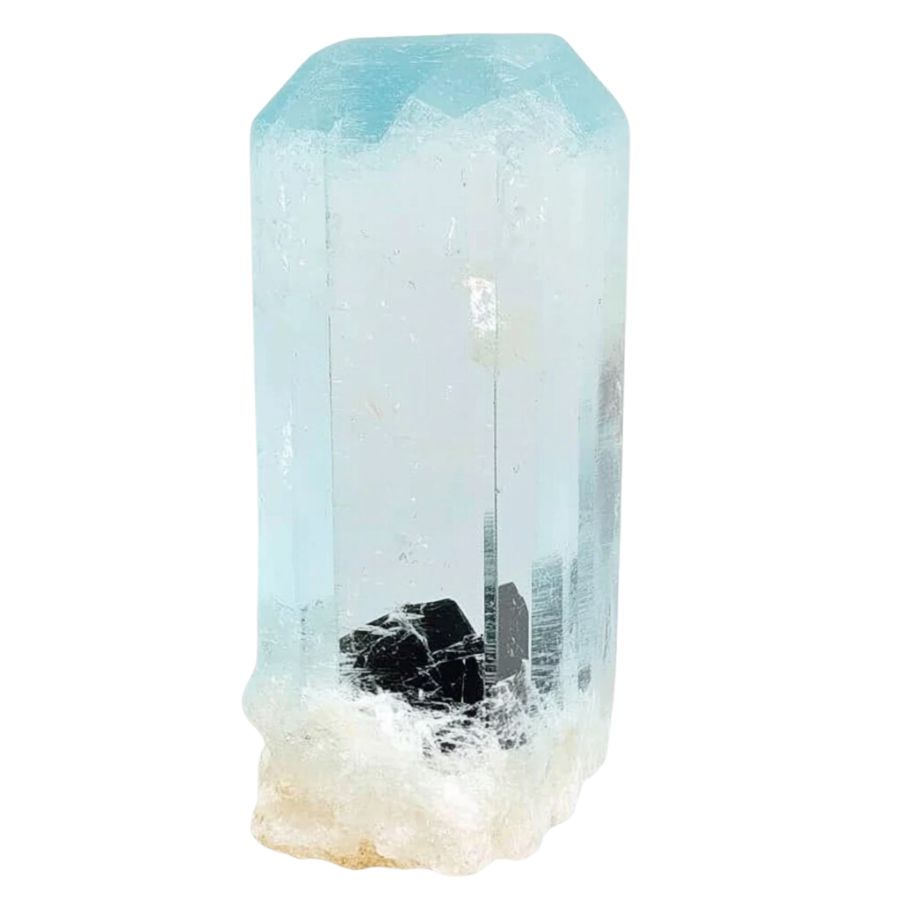
Pay close attention to how much light passes through the crystal. Some crystals are completely clear, allowing light to pass through easily, while others may be opaque and block light entirely.
You might also encounter crystals with translucent edges but opaque centers. These variations in transparency can offer valuable clues about the type of crystal you’ve found, making it easier to identify and appreciate your discovery.
A Quick Request About Collecting
Always Confirm Access and Collection Rules!
Before heading out to any of the locations on our list you need to confirm access requirements and collection rules for both public and private locations directly with the location. We haven’t personally verified every location and the access requirements and collection rules often change without notice.
Many of the locations we mention will not allow collecting but are still great places for those who love to find beautiful rocks and minerals in the wild without keeping them. We also can’t guarantee you will find anything in these locations since they are constantly changing.
Always get updated information directly from the source ahead of time to ensure responsible rockhounding. If you want even more current options it’s always a good idea to contact local rock and mineral clubs and groups
Tips on where to look
Having a better idea of where to look can greatly narrow down your search and increase your chances of finding crystals. By focusing on environments where crystals are likely to be exposed, you can spend less time searching and more time discovering.
Outcrops and Exposed Rock
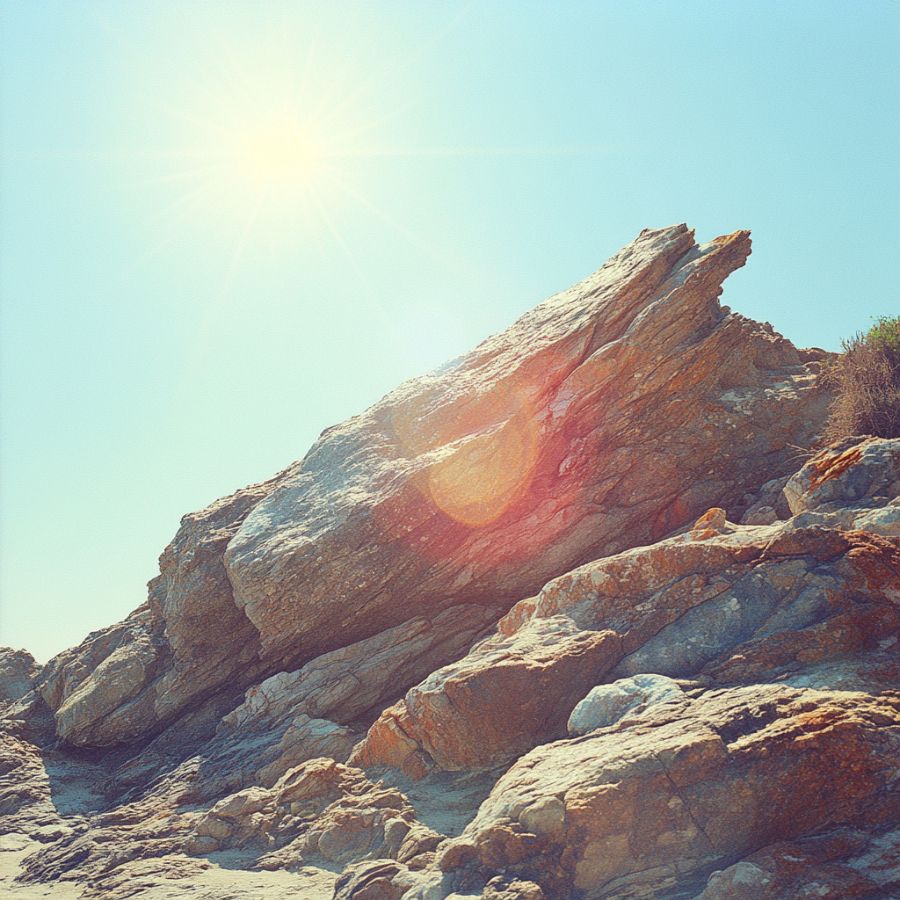
Rocky outcrops are prime locations for finding crystals and minerals. Search along the edges of outcrops, particularly where erosion has worn away the surrounding soil, revealing the rock underneath.
Pay close attention to any visible cracks, crevices, or small cavities within the outcrop, as these are often where crystals develop and can be extracted with minimal effort.
Stream Beds and Gravel Deposits
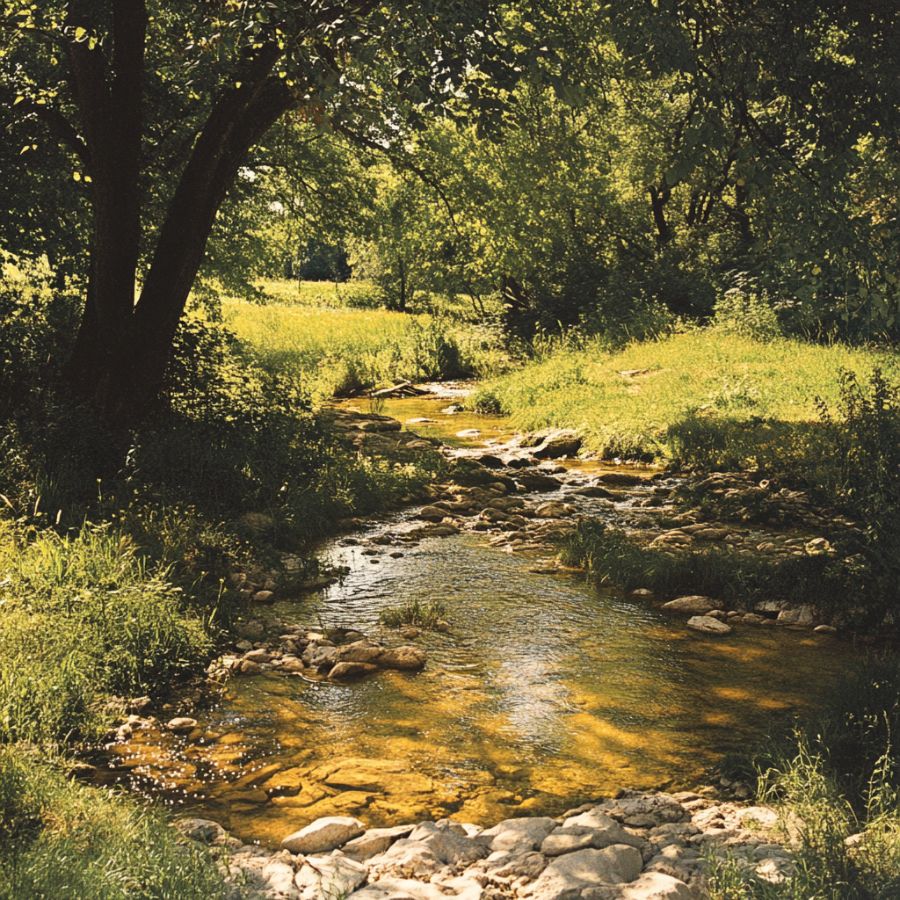
Stream beds are dynamic environments where water flow constantly shapes the landscape. Over time, water can erode rocks upstream, breaking them down and carrying mineral fragments, including crystals, downstream.
When searching in these areas, look for spots where the current has slowed, such as bends in the stream or areas behind large rocks, as these are prime locations for deposits.
Quarries and Mines
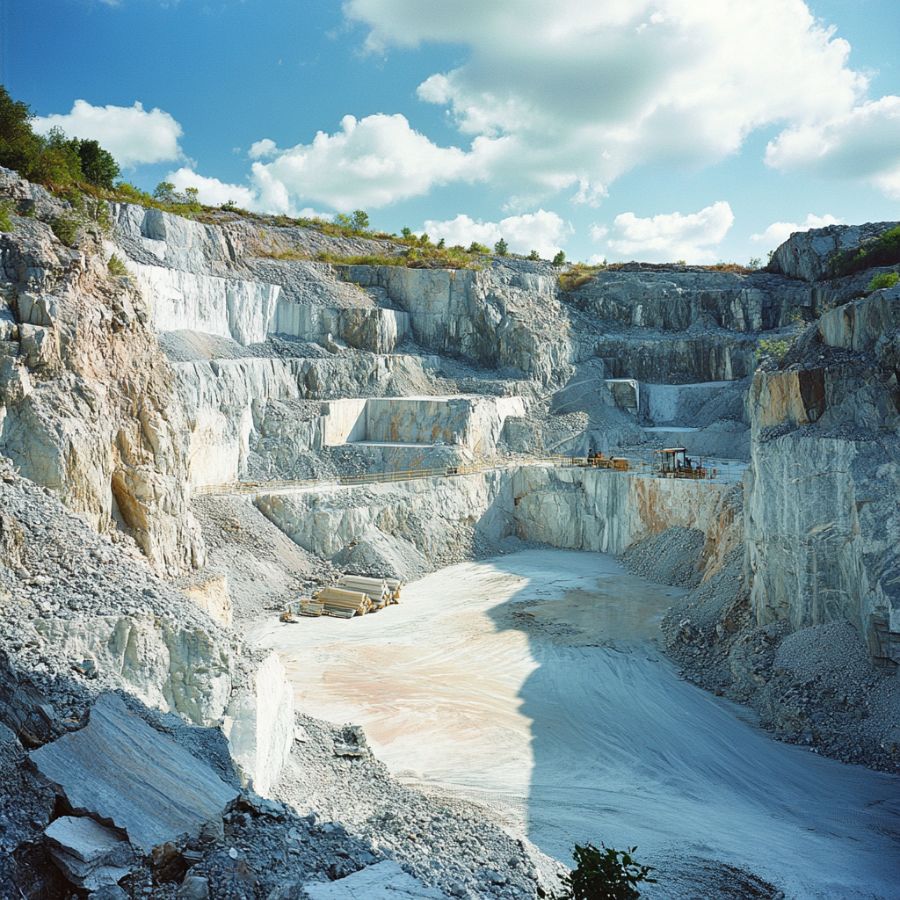
Quarries and mines are excellent places to search for crystals because they expose deep layers of rock that would otherwise be hidden beneath the surface. These sites often contain a variety of minerals and crystals that have been brought to the surface during excavation.
Pay attention to tailings piles, where waste rock is discarded, as they often contain overlooked or broken crystals. Always prioritize safety when exploring these areas and ensure that you have permission to search.
Road Cuts and Construction Sites
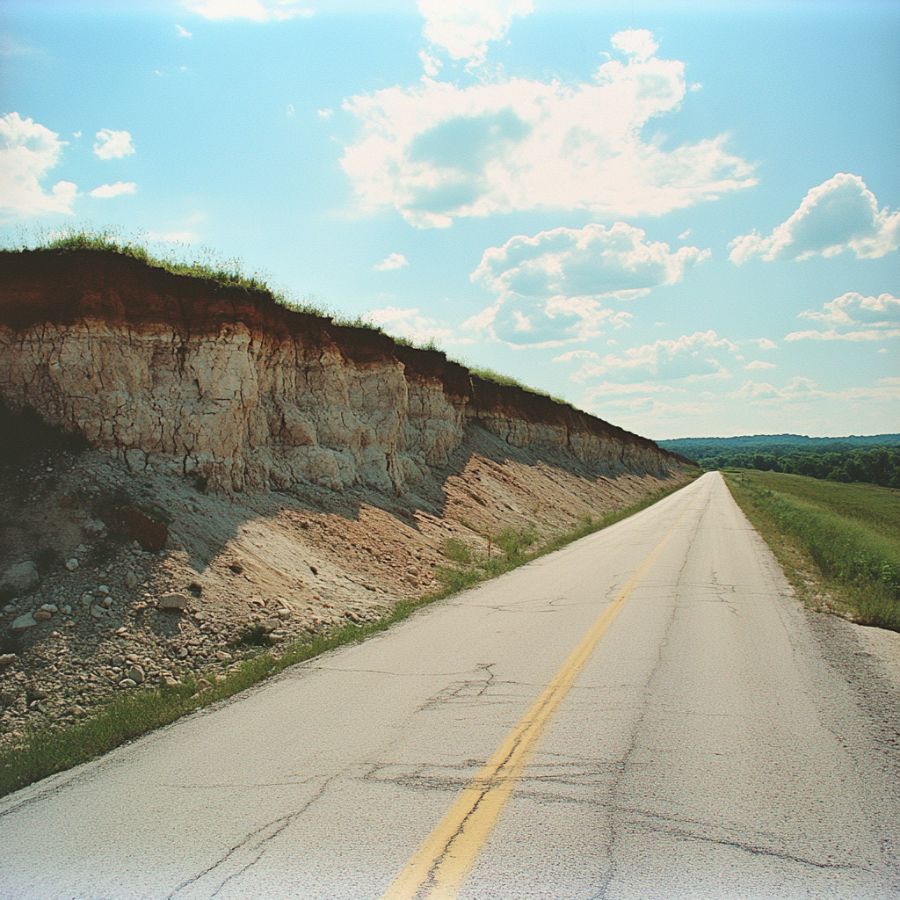
As roads are cut through hillsides or construction projects dig deep foundations, layers of rock and soil that have been undisturbed for millions of years are suddenly exposed.
Look for freshly exposed rock faces, especially where blasting has occurred, as this can create fissures or expose pockets filled with crystals. Be cautious around active construction sites, and always seek permission before exploring.
Mountainous Areas
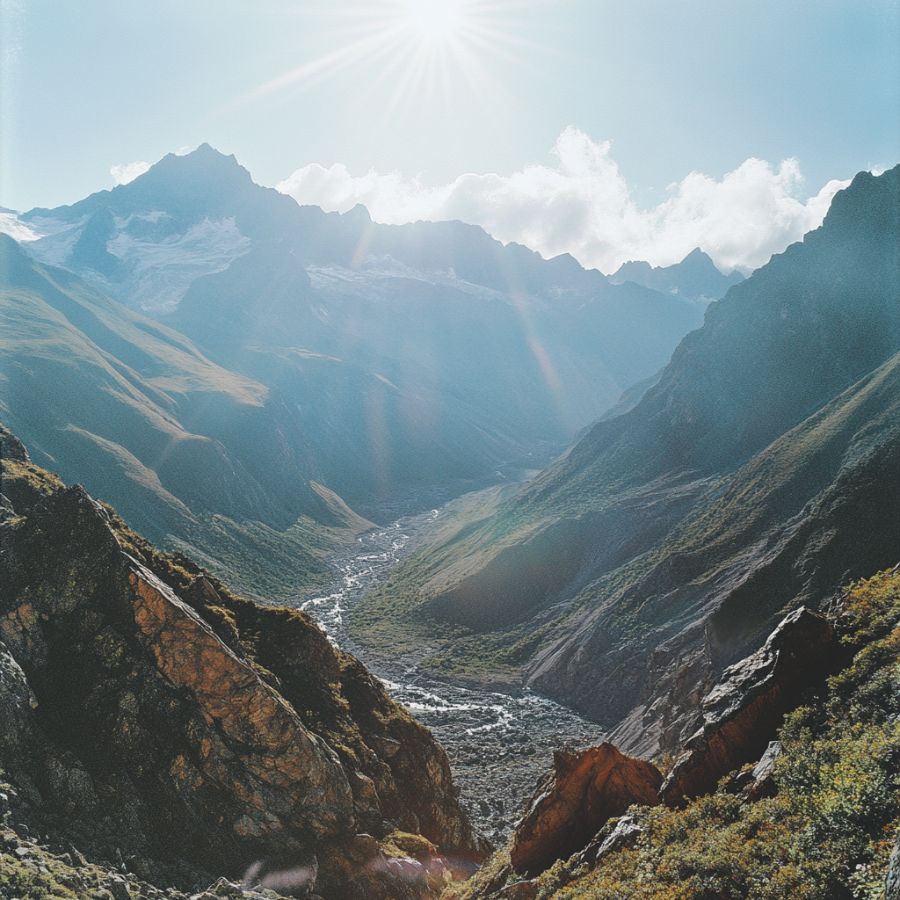
In mountainous regions, erosion caused by wind, rain, and ice can wear away the softer rock, exposing harder crystals that have formed within. Focus on weathered and broken rock formations.
Look for scree slopes, where loose rock has accumulated at the base of cliffs. Additionally, areas near fault lines or volcanic vents are particularly promising, as they often have a higher concentration of minerals.
DON'T MISS OUT ON ANY GREAT FINDS!
While you're out searching for Crystals you're going to find A LOT of other interesting rocks and minerals along the way. The last thing you want to do is toss out something really interesting or valuable. It can be easy to misidentify things without a little guidance.
We've put together a fantastic field guide that makes identifying 140 of the most interesting and valuable rocks and minerals you will find REALLY EASY. It's simple to use, really durable, and will allow you to identify just about any rock and mineral you come across. Make sure you bring it along on your hunt!
Hawaii Crystal Mining Laws And Regulations
For as long as you comply with Hawaii’s local laws on crystal mining, you will have no legal problems engaging in this activity here. This is especially true for the laws mandated by the Hawaii Department of Land and Natural Resources (DLNR) which regulates crystal mining.
It’s no secret that Hawaii boasts of rich natural resources, so make sure you’re aware and are observing any rules or regulations to protect and conserve the environment and biodiversity of our state.
Also, always responsibly secure any necessary permits or permissions before starting your exploration.
- The extensive local experience and understanding of our team
- Input from multiple local crystal hunters and crystal collecting groups
- The accessibility of the crystal mining locations
- Safety and potential hazards when collecting
- Private and public locations
- A desire to include locations for both experienced crystal hunters and those who are just starting out
Using these weights we think we’ve put together the best list out there for those who love finding new crystals for our collections!
The Best Locations For Finding Crystals in Hawaii
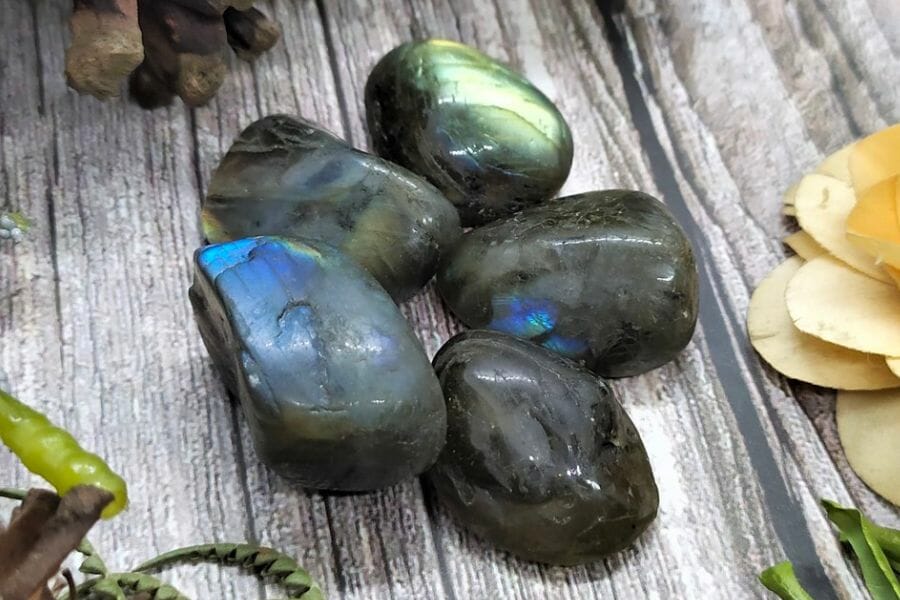
We recommend putting the following places on top of your to-visit list for crystal hunting in Hawaii.
Always Confirm Access and Collection Rules!
Before heading out to any of the locations on our list you need to confirm access requirements and collection rules for both public and private locations directly with the location. We haven’t personally verified every location and the access requirements and collection rules often change without notice.
Many of the locations we mention will not allow collecting but are still great places for those who love to find beautiful rocks and minerals in the wild without keeping them. We also can’t guarantee you will find anything in these locations since they are constantly changing.
Always get updated information directly from the source ahead of time to ensure responsible rockhounding. If you want even more current options it’s always a good idea to contact local rock and mineral clubs and groups
Manele Bay is Our Favorite Crystal Mine in Hawaii
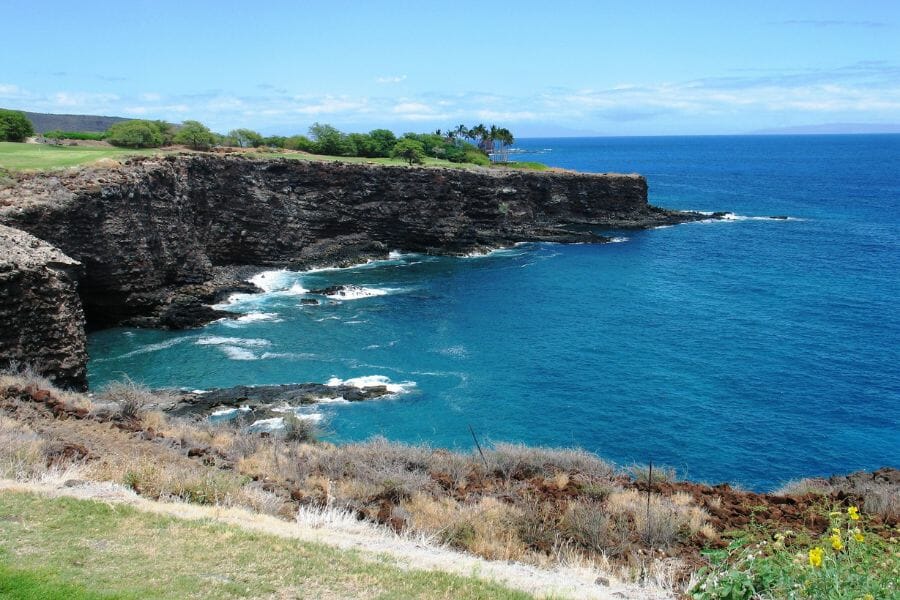
Lanai County, HI
Located on the island of Lanai, just a short ferry ride from Maui, Manele Bay is known for its crystal-clear waters and pristine beaches, but what many people don’t realize is that it is also a breathtaking site for finding crystals. It’s even a great spot to find stunning Hawaii gems.
The geology of Manele Bay is unique, with volcanic rocks and sedimentary formations that create the perfect environment for crystal growth. The history the bay is also fascinating. The area was once a major source of Obsidian, a volcanic glass that was highly prized by ancient Hawaiians for making tools and weapons. Today, you can still find pieces of obsidian scattered along the beach.
So, how do you get to Manele Bay? The easiest way is to take the ferry from Maui to Lanai. Once you arrive on Lanai, you can rent a car or take a shuttle to Manele Bay. There are also guided tours available if you want to learn more about the history and geology of the area.
Where we found crystals at Manele Bay
You can explore the southeast shore of Manele Bay, particularly in the cinder cone, to find stunning shiny samples of Sunstone crystals.
DON'T MISS OUT ON ANY GREAT FINDS!
While you're out searching for Crystals you're going to find A LOT of other interesting rocks and minerals along the way. The last thing you want to do is toss out something really interesting or valuable. It can be easy to misidentify things without a little guidance.
We've put together a fantastic field guide that makes identifying 140 of the most interesting and valuable rocks and minerals you will find REALLY EASY. It's simple to use, really durable, and will allow you to identify just about any rock and mineral you come across. Make sure you bring it along on your hunt!
Olowalu Valley
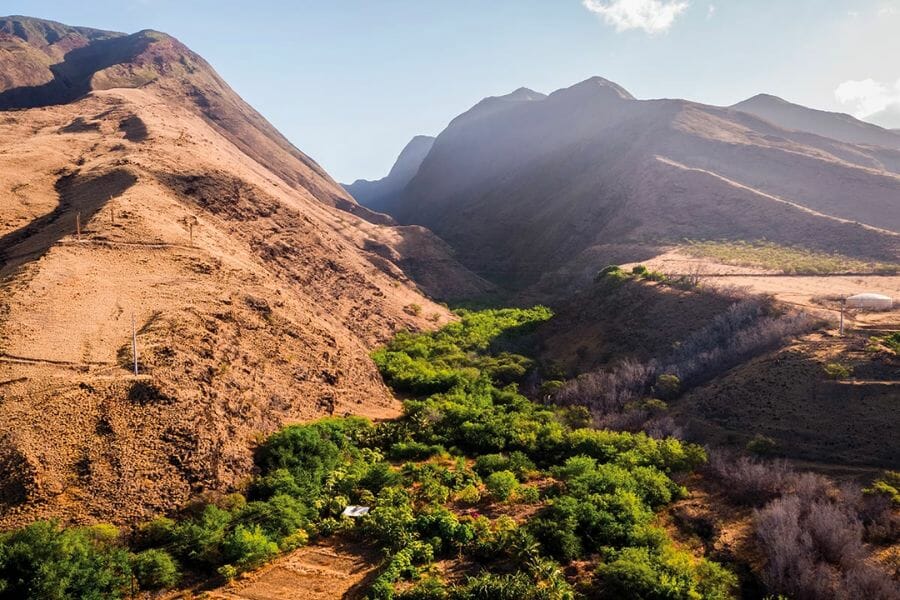
Maui County, HI
Olowalu Valley is known for its stunning scenery (just look it its picture!), rich history, and unique geology. This area was once home to ancient Hawaiian communities, and you can still see evidence of their presence in the form of petroglyphs and other archaeological sites.
The valley is part of the West Maui Mountains, which are volcanic in origin. The rocks here are rich in minerals and the unique combination of volcanic activity and erosion has enabled crystal formation.
To get here, you’ll need to take the Honoapiilani Highway towards Lahaina. Look for the sign for Olowalu Village, and turn onto Olowalu Road. Follow the road until you see a dirt parking lot on the left-hand side. This is where you’ll park your car and start your crystal-hunting adventure.
Where we found crystals at Olowalu Valley
We recommend exploring the different nooks and crannies of Olowalu Valley, where you can find Quartz crystals that people also often call “Maui Diamonds”. To know more about how much these crystals are worth, read our guide on that.
West Molokai Volcano
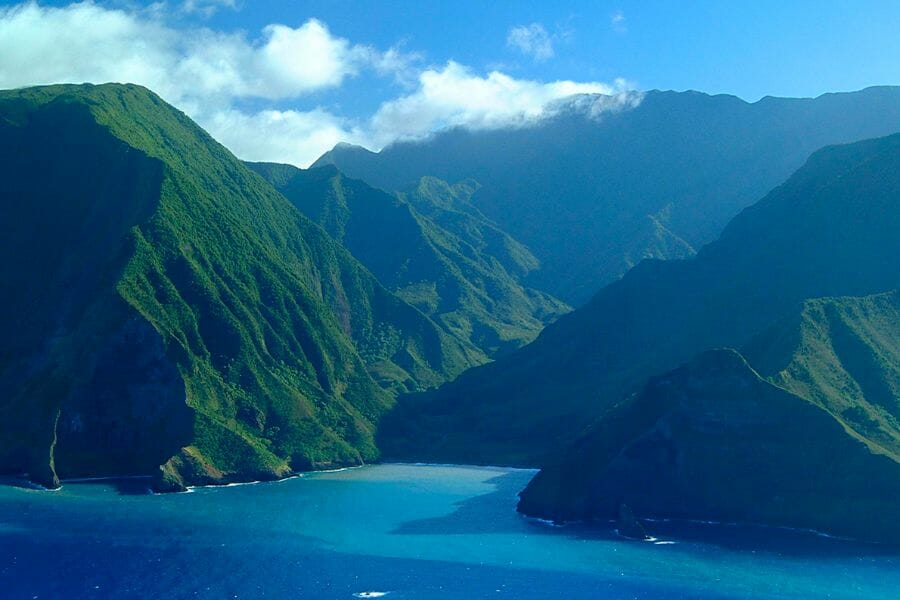
Oahu County, HI
Located on the west end of Molokai, West Molokai Volcano is part of the larger Maui Nui volcanic chain. The volcano is a dormant shield volcano that’s believed to have last erupted around 1.5 million years ago.
The geology of the West Molokai Volcano is what makes it such a great spot for finding crystals. The rocks here are rich in minerals. When lava cools and solidifies, it often creates pockets where crystals can form. These pockets are what you’ll be looking for when you visit the volcano.
If you’re planning to go here, you’ll need to take the Kaulapapa Lookout Road, which is located off of Highway 460. This is a scenic drive that offers incredible views of the island’s rugged coastline and lush forests. Once you arrive at the volcano, you’ll need to do a bit of hiking to find the best spots for crystals.
Where we found crystals at West Molokai Volcano
You can find amazing samples of Banded Agates if you search in the gullies of the West Molokai Volcano. The crater of the volcano also reportedly contains this crystal.
Kilauea
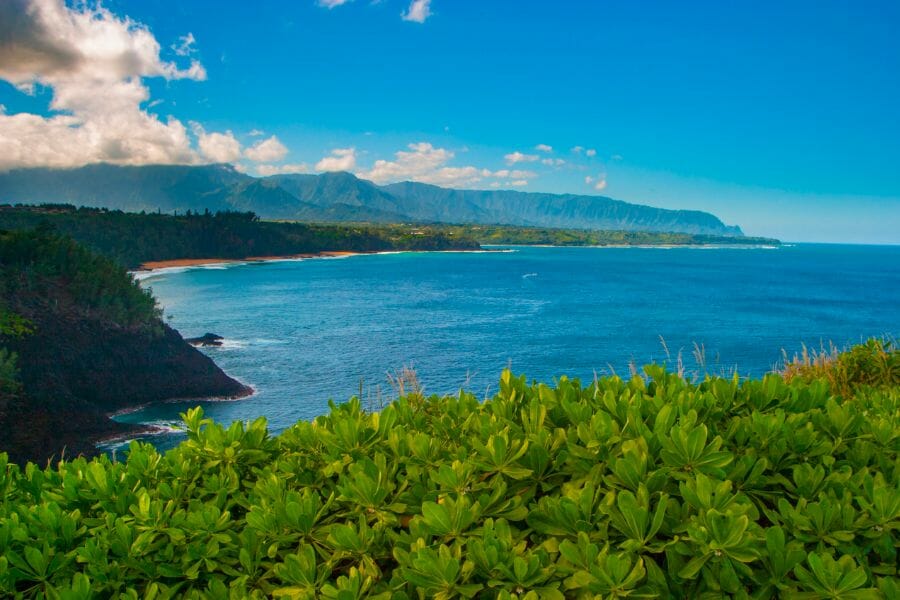
Hawaii County, HI
Kilauea is one of the most active volcanoes in the world. Its eruptions have been documented for centuries, and it’s an area steeped in history and tradition. The volcano is a shield volcano, which means that it has a broad, flattened shape that’s distinctive from other types of volcanoes.
The lava that flows from the volcano is rich in minerals. When the lava cools and solidifies, it often creates pockets where crystals can form. These pockets can be difficult to spot, but with some patience and exploration, you can find some incredible treasures here.
Planning your trip here? Head to Hawaii Volcanoes National Park, which is located on the east side of the Big Island. The park is open 24 hours a day, seven days a week, so you can visit at any time that’s convenient for you.
Where we found crystals at Kilauea
We recommend going around and exploring the different areas of Kilauea, where you can find Obsidian crystals, which are droplets also known as Pele’s Tears.
Pohakea Pass
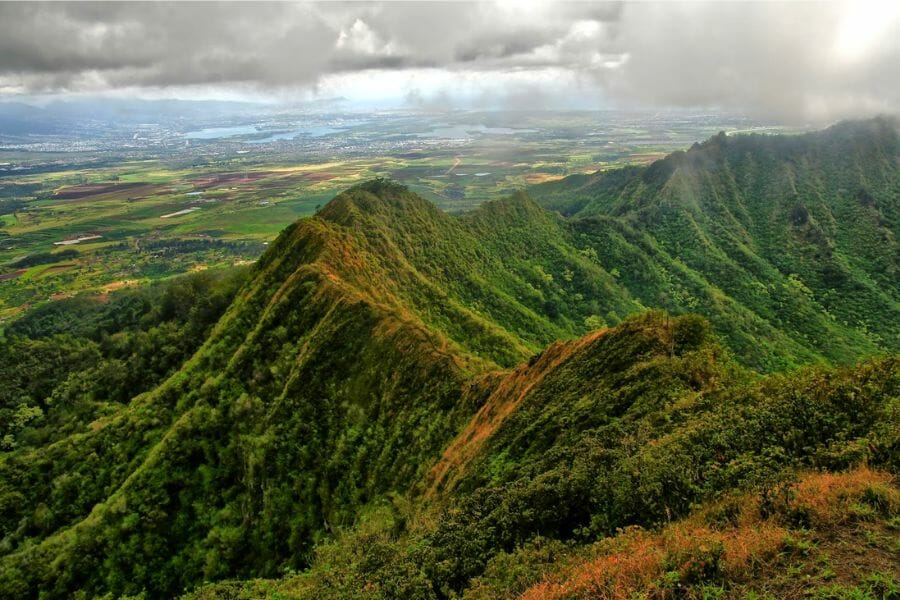
Waianai Range County, HI
Pohakea Pass is a hidden gem is tucked away in the mountains, but it’s well worth the journey for anyone interested in collecting crystals. This area is part of the West Maui Mountains and is named after the Pohakea stream, which flows through it. The pass has a rich history and is considered sacred by many native Hawaiians. In the past, it was used for farming and ranching, but today it’s mostly used for recreational activities like hiking and crystal hunting.
Pohakea Pass is rich in minerals, and the crystals here are often found in pockets of volcanic rock. These can be difficult to spot, but with some exploration and a keen eye, you can find some amazing specimens here.
To visit here, take a hiking trail that leads up into the mountains. The trail can be steep and rocky, so it’s important to wear sturdy shoes and bring plenty of water. The trailhead is located near the village of Kahakuloa, and the hike can take anywhere from 1-3 hours depending on your pace and skill level.
Where we found crystals at Pohakea Pass
We had the best of time finding clear yellow Labradorites in the different parts of Pohakea Pass, and we’re sure you’ll experience the same when you explore here.
Our Other Favorite Places For Crystal Hunting
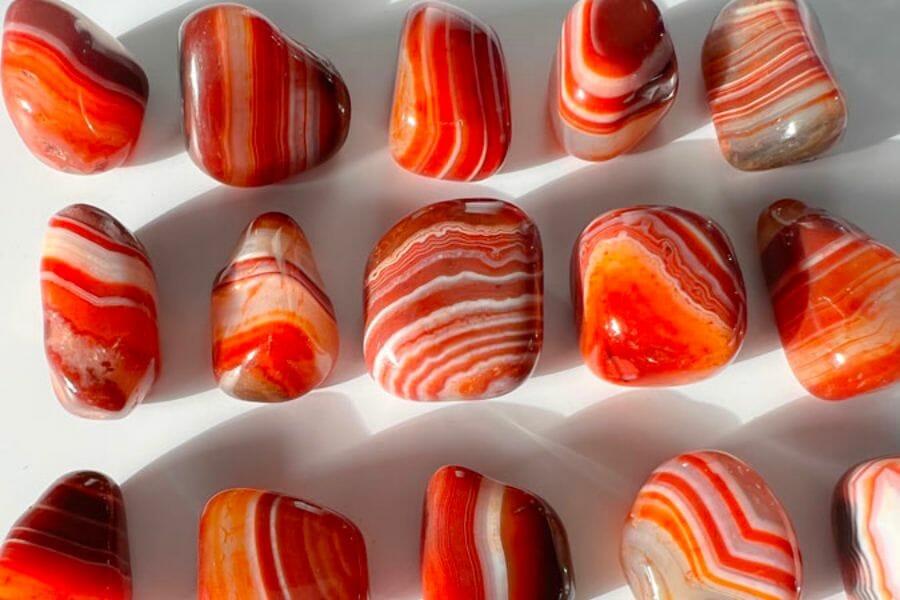
Aside from the breathtaking sites we’ve shared above, here are some additional crystal hunting spots here in Hawaii. The good news is that some of these locations also bear Hawaii geodes.
Where you can find crystals for free in Hawaii
These sites not only offer the best sights in our state (pun intended!), but also contains some of the best crystal reserves that you can search without paying a fee. After all, who wouldn’t want to find and take home crystals for free, right?
| County | Location |
| Hawaii | in lava flow and in green beach sands of Oahu and South Point |
| Honolulu | Kapa’a Quarry |
| Oahu | On north shore in basalt ridges, in ravines from Mount Olokanu |
| Oahu | In Lanikai golf course washes |
| Oahu | In Wahiawa Valley |
| Oahu | On north shore, ridges in Koolau Range |
The Best Crystal Shops In Hawaii
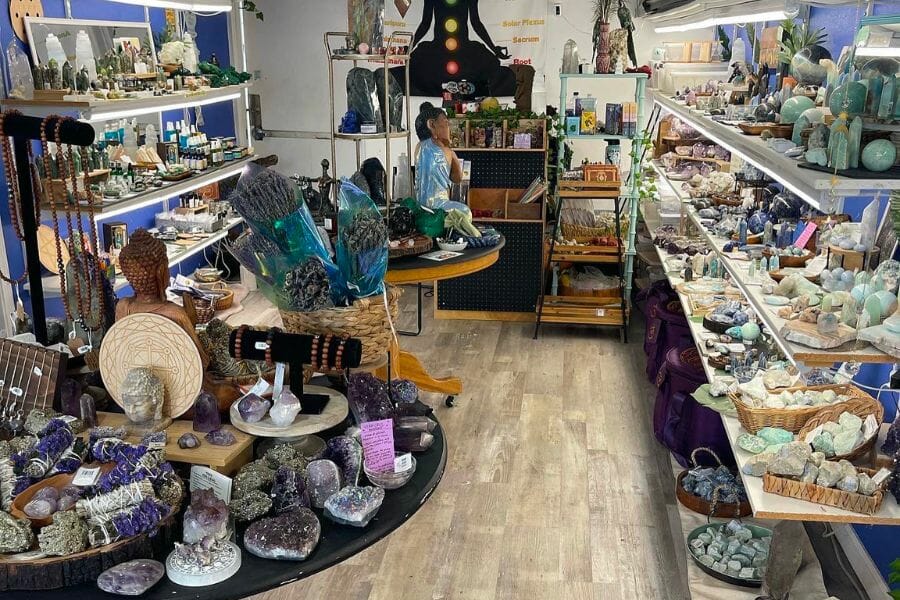
If you don’t mind spending a few bucks for a chance to see and take home great crystal selections, you can also visit the local crystal shops here. We’ve listed down some of the great ones you’ll find around Hawaii:
- Kailua Crystals – 131 Hekili St #108, Kailua, HI 96734
- Lemuria Crystal Shop – 315 Uluniu St suite 101, Kailua, HI 96734
- Sedona Hawaii – 560 N Nimitz Hwy Ste 105A, Honolulu, HI 96817
- Where Crystals Rock – 98-025 Hekaha St #110, Aiea, HI 96701
- Aloha Crystals & Gems – 75-5799 Ali‘i Dr B-6, Kailua-Kona, HI 96740
- Pure Stone Shop – 2250 Kalākaua Ave #3, Honolulu, HI 96815
- Rock Candy Hawaii – 1170 Auahi St SPACE 163, Honolulu, HI 96814
- Crystals & Gems Gallery – 4489 Aku Rd, Hanalei, HI 96714
- Ocean Queen Hawaii – 1450 Ala Moana Blvd, Honolulu, HI 96814
- Angelite Om – 45-3577 Mamane St, Honokaa, HI 96727
If you have any recommendations we haven’t covered, please leave them in the comments below!

